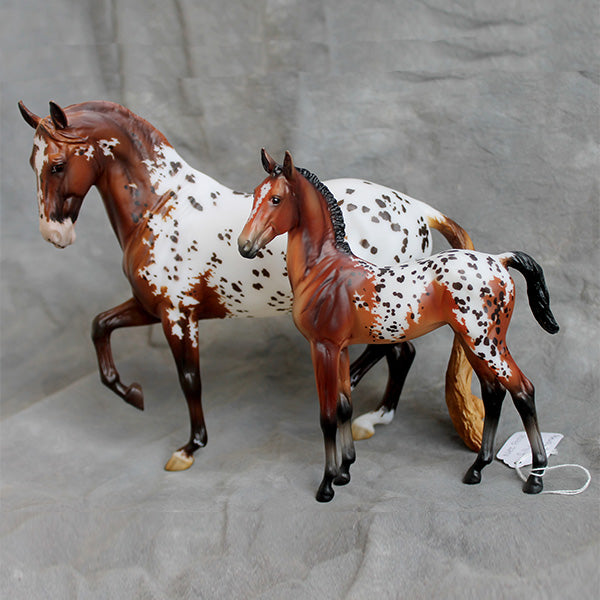
Where to Find Breyer This Holiday Season
A guide to nearly 100 physical retailers across 39 states!

 |
| Success in the show ring with documentation. |
When it comes to breed assignments, I'm very much a proponent of "less is more." For example, if a horse makes a great Quarter Horse, don't try to "fit a round peg into a square hole," just let the horse be a Quarter Horse. Sometimes models don't always fit nicely into a well-known breed, and are better-suited to a rare breed. Other times, the color on a particular model makes it either a very rare color for any breed assignment, or it may be better-suited as a crossbreed that isn't very common. In all of these cases, breed documentation is important to give your horse the best chance of winning a ribbon.
Documentation is helpful in two ways: it makes a case for your horse, and it may also give your judge information they did not previously know. All judges are volunteers and are knowledgeable, but they may have some gaps in their knowledge of rare breeds or colors.
Show attendees used to be able to get away with bringing a breed book to the show and putting the entire book out on the table with their model, but with shows having ever-increasing class sizes, books now take up too much space. There also isn't enough time for a judge to read through to find the important information.
Always make sure to read your show packet for rules on documentation! Some shows, like the BreyerFest Youth Show, require documentation for everything - this article is about creating documentation for local shows, where every show may have slightly different rules. Some shows specify the maximum size of your documentation paper, which is also to save space for other horses on the table. Be sure to follow these rules if they are present, or you may risk disqualification from the class.
 |
 |
|
With his silver bay coat, this horse can be
very hard to find a breed for. With documentation he can do very well as a few different pony breeds or crosses. |
I like to show this foal as a Nez Perce. The mare can be shown as a variety of breeds, including a historical Lipizzaner as she was originally painted to be. For both of these breed assignments, documentation is helpful, as it isn't widely known that spotted Lipizzaners were once possible. |
The key to good documentation is to stick to relevant facts. Less is still more here. Even if the judge doesn't know the breed of horse that you are explaining, they don't need to know its origin story in flowery detail - and they probably won't have time to read it. For my most extensive documentation, I haven't needed more than half of a standard piece of printer paper.
For rare breeds, the judge needs to be able to answer the following questions:
It's also very important to include a clear photo that looks like your model.
 |
 |
| This model can be shown as a few different breeds, some of which don't need documentation. I don't think it's fair to assume that all judges know that there is a rare chance for Percherons to be roan, so when I show her as such, I make sure to have my research next to her! |
I show this pony as a Pony of Americas, which is a well-known breed for model showing. He started to place better when I found a photo that matches his bold, stark varnish roan face marking to prove it is realistic. |
For color documentation, you will probably have a smaller word count compared to breed documentation. A photo of the breed of horse in the color you are depicting is key.
The best sources for correct photos and information on breeds and colors are breeder webpages and breed registry pages. Do not rely on Google image searches - unfortunately, anyone can caption a Pinterest photo of a horse with the wrong information, which often happens. These images show up at the top of Google image searches, so you have to follow through on the source to see if the image is from a page with accurate information.
Clean, informative documentation can take a little while to put together, but in the end can be very rewarding and useful for years. If you put the effort into great documentation, you've made yourself a tool to give your model a leg up in the show ring.

An example of breed documentation. You can add photos above the text,
which is helpful if you’re documenting a rare or historical color.

A guide to nearly 100 physical retailers across 39 states!

A collection of exclusive models is now arriving at Tractor Supply stores just in time for the holiday season!

We're making room for exciting new 2026 additions!
